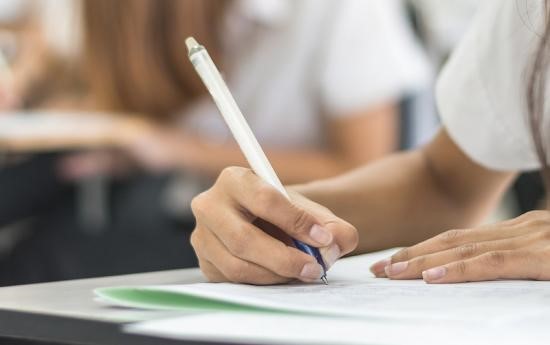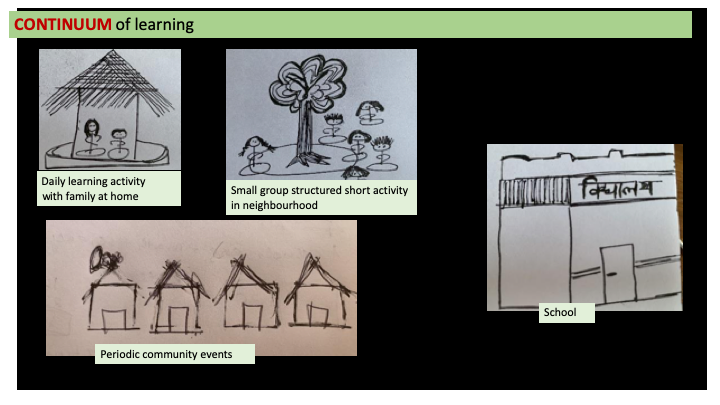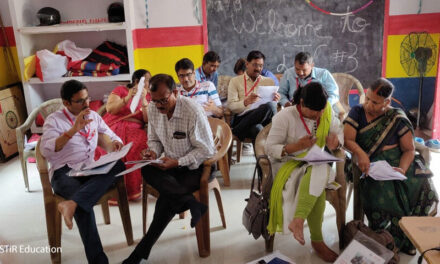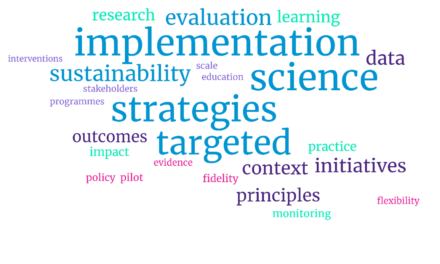This blog was written by Rukmini Banerji, Chief Executive Officer of Pratham Education Foundation in India. It was originally written for the RISE Programme and published on the RISE website on 6 July 2020.
The school closures from COVID-19 mean larger than usual learning losses and hence cannot just be “business as usual”—here are some tips about using the COVID break as a chance to not just mitigate from the losses, but do better.
- Celebrate. School re-opening is a time to celebrate
- Connect. Get ready to return to school, every day.
- Connect. Meet children at their level: Simple one-on-one oral assessment to reconnect
- Catch up. Get ready to learn by building foundations of learning this year.
- Clear goals: Every child (Grade 3 and above) reading basic text fluently and doing simple arithmetic confidently before next summer.
- Community. Recognize parents and community members for their role in helping children with learning activities during school closure and involve them in ongoing learning activities with children in future
- Continuum. Learning support must stretch from home, family, neighbourhood, community to school.

- Celebrate. Celebrate. Celebrate. The 2020 school reopening will be the most anticipated school opening in history. We must celebrate children going back to school.
- Connect: Ensure universal enrollment and regular attendance: Schools must track daily attendance closely. Do special attendance related activities that involve children and that can enable children to persuade their friends to come to school every day. Special focus on vulnerable groups and populations.
- Connect: Meet every child at her/his level: Use simple assessment tools (like ASER). These can be used by parents and teachers to assess how where a child currently is in terms of the ability to read simple text, knowledge of numbers and operations. The one-on-one oral assessment enables a teacher to spend a few minutes individually with a child; this helps in reconnecting with each child in the class. Doing this with all children in the class gives the teacher a current and real sense of each individual child’s level and it also helps her understand the diversity (distribution) of levels in the full class. The assessment provides immediate instructional guidance to the teacher about activities that need to be done with each level. (ASER like tools can be shared with teachers easily via phone and WhatsApp).
- “Catch-up” and focus on foundational skills: Available evidence indicates that basic learning levels for many children were at an unsatisfactory level even in pre-COVID19 time. Due to prolonged school closure, significant learning loss is inevitable. As schools reopen, quick assessment needs to be done followed by a focussed effort to rebuild foundational skills (especially basic reading and arithmetic). For example, 1 hour a day devoted to rebuilding reading skills and 1 hour a day for basic arithmetic. Support for teachers can be provided via zoom or other remote means.[i] Clear goals are needed. For example: Every child in Grade III and above should be able to read basic text fluently and be able to do simple arithmetic operations by a given time (for example by next summer).
Two key points for foundational skills:
-
- Focus on school readiness skills in early years (pre-primary, Grade I & II)
- Prioritize – specific time and effort daily for “catch up” learning: Grades III and above.
Pratham’s decade long work has shown that in 30 to 50 days, focused work can get children to learn reading and basic math competencies or foundational skills for the age group 7/8 and above.[ii] With strong focus and simple techniques, this can be possible. Pratham’s instructional model “Teaching-at-the-Right-Level” has been repeatedly been evaluated rigorously by JPAL and found to be effective.[iii] [iv]
After months of lockdown and disruption, a taste of real progress is needed. Learning to read is like learning to ride a bicycle. Clear visible change for the child and for everyone around. All of a sudden, you are up and going and then you never want to stop. Learning to read is a magical moment. Use this opportunity to create this momentum.
Tracking progress: Review of progress on foundational skills at every level is needed. Timelines for progress announced and adhered to. For example, in India, the aim can be that by March 2021 (end of 2020-21 school year) every child in Grade III and above is reading fluently with comprehension and confidently doing basic arithmetic operations. This can be the major goal of the 2020-21 academic year that the entire system particularly the primary grades focus on.
Specific focus on “transition grades”—those who are coming into Grade I, those who are moving into Grade III, those moving from primary grade to upper primary/middle school (Grade IV) and those who are in the last year of elementary school.
- Community and parents’ engagement: Parents at all levels (educated and uneducated, rural and urban) have been involved in children’s learning in some way. Need to leverage and grow this engagement in planning forward for education. Parents and community members can help in a significant way to ensure foundational skills. Daily phone or voice messages and “home tasks” to be done by child at home with family members will help to provide a personal and individual link between the teacher and every child’s family.
- Continuum of learning opportunities needs to be established. Schools will reopen but there may be intermittent closures in future if disease and infection spread or restart. Therefore, we must be prepared with learning activities happening in the family, in the neighbourhood, in the village or community and in the school.
 RISE blog posts reflect the views of the authors and do not necessarily represent the views of the organisation or our funders.
RISE blog posts reflect the views of the authors and do not necessarily represent the views of the organisation or our funders.
[i] In many states in India, teachers are at work or may be back soon. Several suggestions for how teachers can work from remote on foundational skills even for the time before schools re-open. A teacher can phone children (in groups or individually) and assign them simple tasks to be done. Regular and predictable phone contact with children will help them start “getting ready” for school. If movement is possible, especially in rural areas, grouping of children (small groups in neighbourhood) can be guided on simple tasks that help to build reading and arithmetic. This may be the time to enlist help of village volunteers to work with children on basic reading and arithmetic.
[ii] 2016. Co-author with Madhav Chavan “Improving literacy and math instruction at scale in India’s primary schools: The case of Pratham’s Read India program“. Journal of Educational Change. 17(4), 433-475. November. http://link.springer.com/article/10.1007/s10833-016-9285-5
[iii] 2016. Co-author with Abhijit Banerjee, James Berry, Esther Duflo, Harini Kannan, Shobhini Mukherji, Marc Shotland, Michael Walton From Proof of Concept to Scalable Policies: Challenges and Solutions, with an Application. NBER Working Paper 22931. Issued in December 2016. http://www.nber.org/papers/w22931. Also 2016. Co-author with Abhijit Banerjee, Esther Duflo, James Berry, Harini Kannan, Shobhini Mukherji, Marc Shotland, and Michael Walton. “Mainstreaming an Effective Intervention: Evidence from Randomized Evaluations of “Teaching at the Right Level” in India”. NBER Working Paper No. 22746. October 2016. http://www.nber.org/papers/w22746?sy=746
[iv] Evidence in Practice series: Pratham’s Teaching at the Right Level. Yale School of Management https://cpb-us-w2.wpmucdn.com/campuspress.yale.edu/dist/4/2450/files/2018/04/EvidenceInPractice_CaseStudy_TaRL-1mshy9c.pdf




